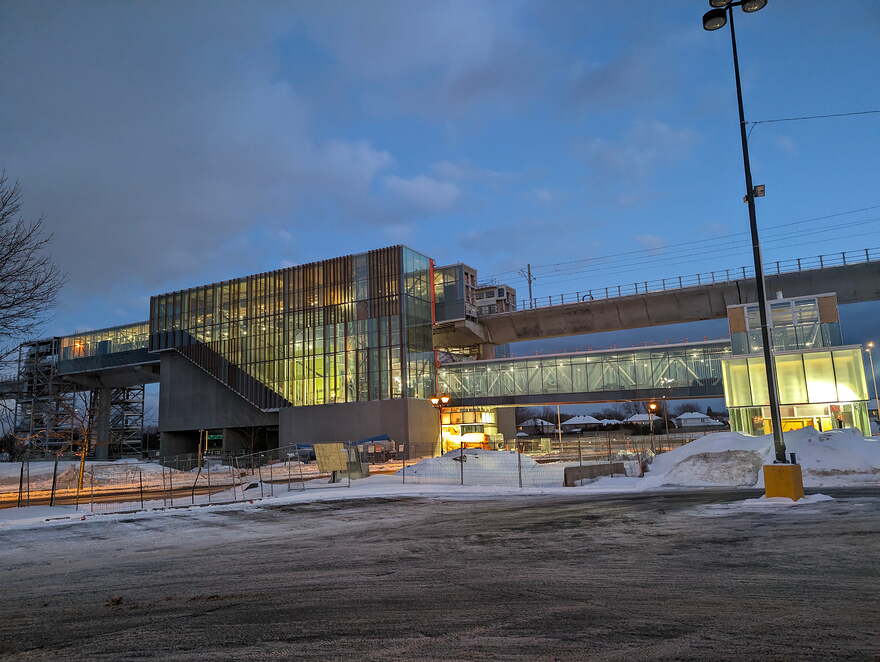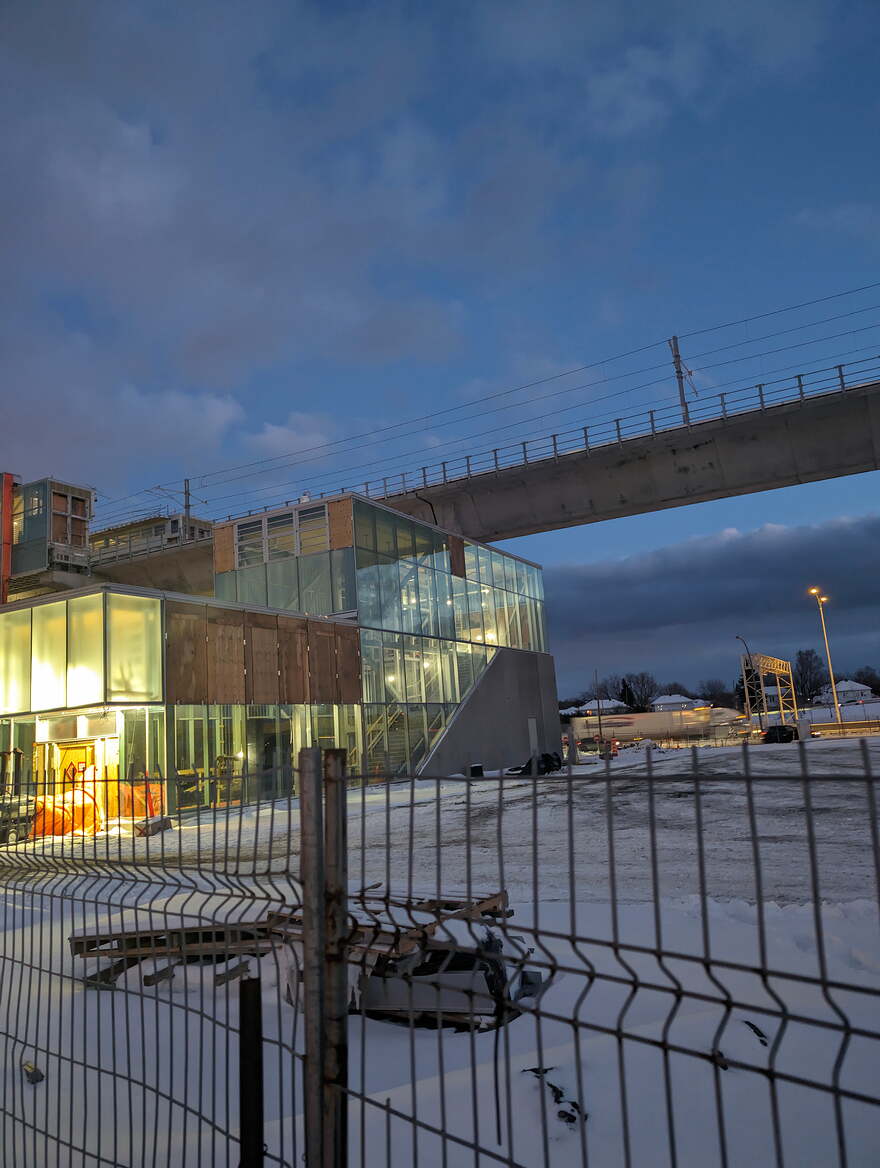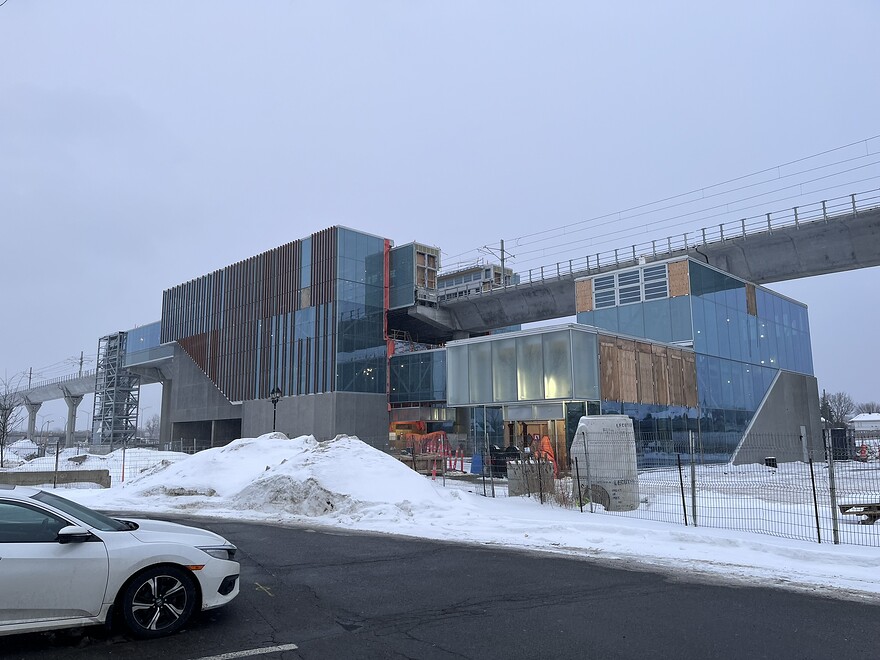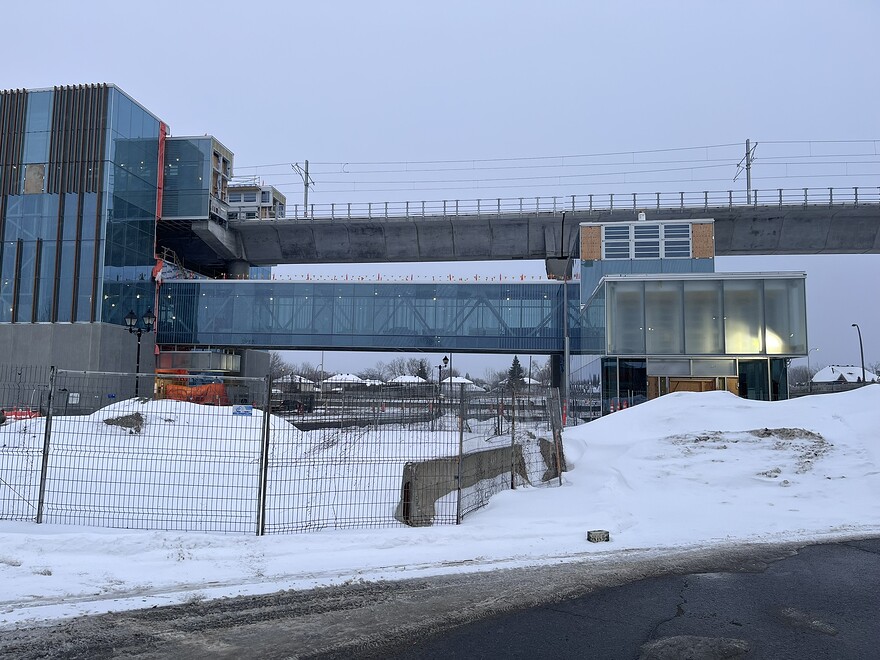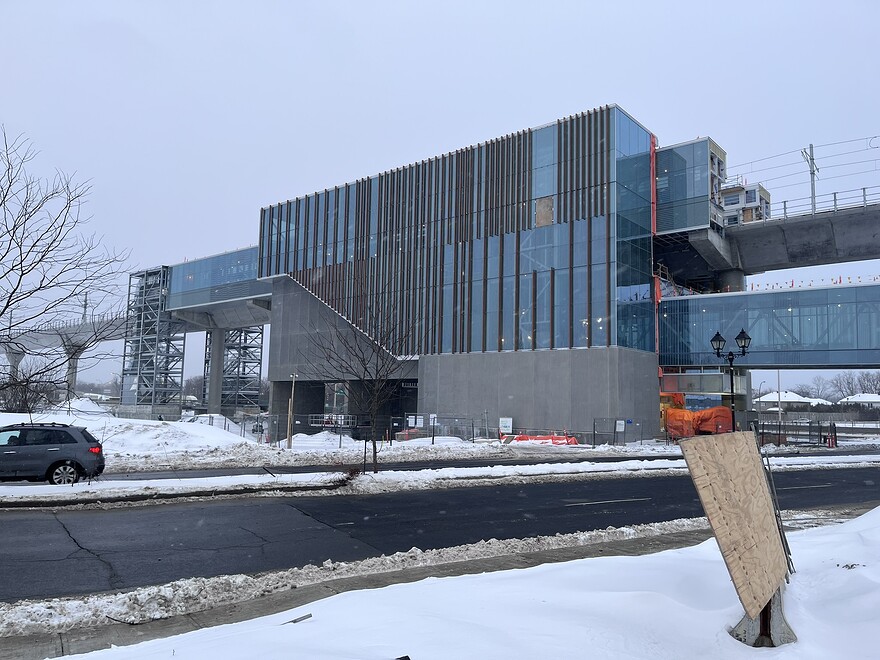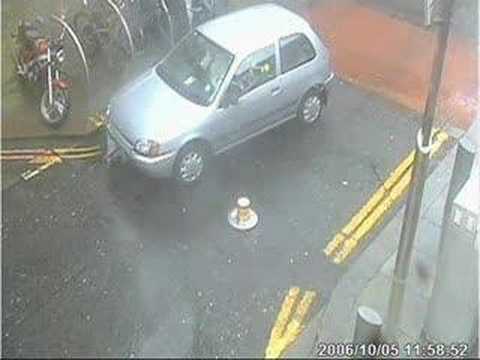So turns out they have another window hole
Je sais je suis bizarre! Mais j’aime beaucoup la céramique verte, surtout quand je le le vois le soir illuminé…
De plus j’ai remarqué des lumières bleue foncée sur le la partie surélevé adjacent a la 40, quelqu’un connait leur origine? Je ne peux malheureusement pas prendre de photos car je suis sur l’autoroute.
From a question sent to nouvlr, they gave me this:
Pour répondre à votre question, ces lumières sont des BLS (Blue Light System). s’agit-là d’un élément obligatoire de sécurité ferroviaire pour les urgences (appels ou disjonctions). L’installation sera complétée en vue de la mise en service du REM.
I really hope the rest of the cookie-cutter elevated stations get the same wooden-slat exterior treatment. Much more interesting than yet another blue glass box that looks like a Mississauga medical centre.
Cars to be banned on new access road to future Kirkland REM station
The road will run for 1.5 kilometres, spanning from Ste-Marie Rd. in Kirkland to Antoine-Faucon St. in Pierrefonds—Roxboro, and is expected to be completed in 2027.
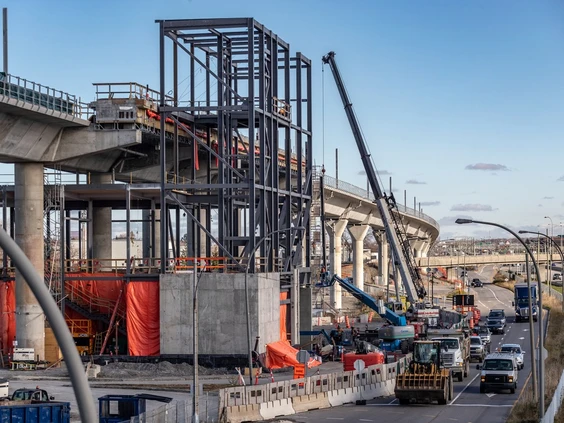
Construction of the REM station in Kirkland in November 2022. Photo by Dave Sidaway /Montreal Gazette
Cars will be banned, and it will arrive about three years late, but Montreal will begin construction in the coming weeks on an access road to the future Réseau express métropolitain station in Kirkland.
Montreal city council approved a $20-million loan bylaw on Tuesday that will permit construction of a long-awaited urban boulevard along land reserved decades ago by the province for an extension of Highway 440. This is the second loan bylaw approved as part of the project — the first bylaw for $40 million was approved in December — bringing the project’s total estimated cost to $60 million. Kirkland Mayor Michel Gibson said the province will cover about $20 million.
The work will begin this year, but it’s estimated to be completed only in 2027 — about three years after the station begins welcoming trains. However, the road in question will only be for bikes and buses.
According to the most recent timetable outlined by builders of the REM, the station located on the Anse à l’Orme branch of the new light-rail network is due to enter into service later this year.
The station itself is located in a high-traffic area of the West Island, not far from St-Marie Rd. and the service road to the Trans-Canada Highway. Local mayors have worried about the access to the station, as it will have limited parking spots, and bus service in the area is inadequate.
The road will run for 1.5 kilometres, spanning from Ste-Marie Rd. in Kirkland to Antoine-Faucon St. in Pierrefonds—Roxboro. The project also includes a four-kilometre cycling and walking path that will run from Gouin Blvd., along the 440 corridor to link to Ste-Marie.
The project also includes:
- Reconfiguring the Ste-Marie intersection at Highway 40.
- Reconfiguring a 400-metre-long multi-use path north of Ste-Marie to connect to the REM station.
- Building a 700-metre overpass to cross the Trans-Canada Highway.
- Reconfiguring the schoolyard of Margaret-Mason Elementary school to free up space for the active transportation lane.
- Landscaping and drainage.
Speaking at city council Monday night, Pierrefonds—Roxboro Mayor Jim Beis urged the city to reconsider banning cars in an area where traffic congestion is a daily reality.
“Again, we see that unilaterally they decide to do something, and they don’t consult us or our residents because they’re completely against this,” Beis said.
Beis said that the 440 corridor was identified in a study in 2003 as a north-south urban boulevard that should be built in order to alleviate traffic on St-Charles Blvd. While the Charest government pledged to build that road in 2012, the project was ultimately killed by Montreal Mayor Valérie Plante in an agreement with the province in 2018.
Reacting to the plan, Kirkland’s Gibson said the Plante administration dug in its heels to ban cars in the area.
“I definitely would have preferred to have cars, but it’s the city of Montreal that’s taking charge of the project, and Valérie Plante didn’t want cars on it,” Gibson said. “We argued and argued, but she won the argument (in the deal with the province).”
Gibson said the arrival of the REM station is likely to cause some traffic issues in his city. He said having a road reserved for transit would be helpful, but it would have been preferable for it to be ready in time for the REM to enter operations.
“I can’t be against public transit to bring people there,” Gibson said. “But Montreal is always late. They should have probably gone to tender two years ago, but we can’t do anything about that now.”
Residents of Pierrefonds want more road space? I’m shocked. I lived there for 23 years, you don’t need more road space. What you need is better space utilization. I worked on Saint-Jean and Saint-Charles near A40 each for 6 and 2 years respectively. I rarely ever saw traffic so bad that it warrants a whole other boulevard.
The idea is attrocious alone. Antoine-Faucon is a residential street and you want to have a direct connection to the 40 and transform it in an arterial road???
The problem with congestion in the West Island (which honestly is not that bad) is purely due to the complete dependency of people on cars to do absolutely evreything. Change that and you will have solve the problem. Better yet, that will be something that will last and be good for everyone.
Oy vey.
Very interesting to see a dedicated bus road being built, is it the first of its kind in Quebec?
Im curious to see if there will be any enforcement of the lane. I can’t imagine there’s going to be that many entrance points so perhaps cameras to ensure compliance could be a good investment.
Nah, get some hydraulic bollards:
Not sure if snow would interfere with these, but they do seem effective!
I don’t think that they are made for the kind of climate that we have. Gates are more reliable in our climate since its a lot harder for water to get into them. The other issue is that if there’s even a slight difference in the elevation between the bollard and the road surface, plows are absolutely going to wreck something. The only place where I feel that they might make sense is underground parkings, just beyond the threshold, where it is much harder for the elements to attack them.
Ban cars makes it sound like they’re removing cars from a road that currently exists. What Gibson and company are begging for is really more cars in this area, where cars don’t currently exist. That’s clearly what the west island is missing, more car lanes. One more lane and traffic is solved forever, I’m sure of it!!! ![]()
There is a difference between adding lanes to an existing access road, and adding an access road where none exists.
I would say Mayor Gibson’s opinion seems more nuanced, it’s Mayor Beis who is outraged.
Sometimes they can serve the same purpose, to “decongest” elsewhere. The road hasn’t existed up until now and this area has gotten by, a busway is an immediate increase in mobility (from nothing at all). Is it necessary that there is more car infra here too?
Il y a-t-il un schéma a quelque part pour mieux visualiser les lieux de ces interventions?
Oupsi, dans l’article , j’avais juste lu ce qui était sur le forum
Je ne comprend toujours pas pourquoi le viaduc se doit d’être aussi haut. Ça rallonge inutilement le temps d’accès aux plateformes des stations. J’ai vraiment l’impression qu’il aurait pu être rabaissé, ou même que la station était pu être mise en talus quitte à faire descendre la rue en cuve.
?
The Grand Sudouest has “gotten by” without a metro or tram. The East has “gotten by” without a “REM”.
I know what Jevon’s Paradox is, but it can’t apply to western Pierrefonds, because the road itself doesn’t exist. Right now, all of western Pierrefonds funnels to St-Charles along with about half of centre-western Pierrefonds and Île-Bizard. With an access road along the A440 right of way – one that was also planned to connect to A20 – it would spread the load that already exists, and relieve the congestion caused not only on St-Charles, but also on residential streets in Pierrefonds and Kirkland.
I wish everyone who is against the idea of an A440 boulevard, or who lauds that the transitway will only go from Ste-Marie to Antoine-Faucon, gets a chance to drive, walk, or even ride a bike on Antoine-Faucon or the western end of Brunswick during morning or afternoon rush hours.
